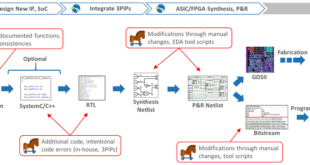Related Articles
Introduction
The digital battlefield is rapidly evolving, and ensuring robust cyber operations is more critical than ever. The Air Force Research Laboratory Information Directorate in Rome, N.Y., has issued an advanced research announcement for the Advanced Cyber Operations Prototypes (A-COP) project. This ambitious initiative aims to develop cutting-edge technologies that will underpin an assured and trusted cyber infrastructure. By enabling continuous command and control, situational awareness, and effects-based defenses, A-COP is set to enhance signals intelligence (SIGINT), electronic warfare (EW), and overall cyber operations across military domains.
The Necessity of an Assured and Trusted Cyber Infrastructure
An assured and trusted cyber infrastructure is critical in today’s increasingly complex digital landscape, where cyber threats are both sophisticated and persistent. This robust framework ensures the integrity, availability, and confidentiality of vital systems and data, allowing military and critical national infrastructures to operate seamlessly even under hostile conditions. With continuous access to command and control systems, such infrastructure empowers decision-makers to respond swiftly to emerging threats and maintain operational continuity. By fostering an environment of trust, resilience, and reliability, a secured cyber foundation not only safeguards against potential disruptions but also underpins the effectiveness of advanced technologies, such as those being developed under the A-COP project, ensuring that cyber defenses can be dynamically adapted to counter evolving adversarial tactics.
Project Overview and Objectives
A-COP is designed to address the pressing needs of modern cyber operations by developing enabling technologies that ensure an assured cyber environment, even in the most challenging operational conditions. The project focuses on several critical objectives that work in tandem to create a resilient and adaptive cyber infrastructure capable of safeguarding critical military systems.
One key objective is continual access and command and control, which ensures that cyber assets supporting on-demand missions can be accessed and controlled continuously. This capability is essential for executing rapid responses in dynamic combat scenarios, where every second counts. Additionally, the project aims to develop systems that provide continuous situational awareness, offering real-time, comprehensive monitoring to help operators detect potential risks early and respond before threats can escalate.
Another important focus of A-COP is on effects-based defenses. This involves utilizing the assured and trusted infrastructure to compute, provision, and automatically deliver defense measures based on the effects required to neutralize threats. By transforming raw data into actionable defense strategies in real time, these systems can more effectively counter cyber attacks. Finally, the project emphasizes situational understanding by establishing a dependency map of mission functions and threads to the underlying infrastructure, thereby enhancing operational and contingency planning across cyber, SIGINT, and electronic warfare domains.
Technical Requirements and Areas of Interest
The A-COP project targets a wide array of technologies that are crucial for modernizing military cyber operations. A significant focus is on developing secure, scalable, and resilient cloud platforms that can support cyber operations in both tactical and enterprise environments. These efforts emphasize the adoption of advanced virtualization technologies, zero-trust computing models, and trusted hardware and software to ensure system integrity in an increasingly contested cyber domain.
In addition to robust cloud architectures, the project prioritizes the creation of comprehensive frameworks for code analysis, evaluation, and secure development tools. These frameworks aim to minimize software vulnerabilities by establishing secure protocols and standards for information exchange. Advanced cyber modeling and simulation techniques are also being employed to predict and analyze threats, thereby enhancing decision support for proactive threat mitigation and operational planning. Furthermore, decision support systems are designed to provide real-time insights and rapid responses to emerging cyber threats, ensuring that military operators can act swiftly in critical situations.
The project also addresses the unique challenges of mobile and embedded device security, which are increasingly important in environments where bring-your-own devices and other non-traditional systems are common. Efforts in this area extend to developing novel cybersecurity measures for untrusted environments to safeguard automation and tactical systems. Moreover, advanced protocols and risk estimation methods are being developed to enhance cyber situational awareness, ensuring continuous monitoring of both wired and wireless networks across diverse military platforms. Collectively, these technical requirements are intended to bolster the overall cyber infrastructure, equipping military systems—from embedded devices and firmware to large-scale tactical networks—with the capabilities needed to handle current and emerging cyber threats
Implications for Military Cyber Operations
The technologies being developed under the A-COP project are poised to transform military cyber operations significantly. With continual access and the ability to exercise command and control over cyber assets, military forces will be better equipped to support on-demand missions. Continuous situational awareness systems will help to preempt most threats, while effects-based defenses will automate the delivery of countermeasures based on real-time threat analysis.
Moreover, situational understanding—achieved by mapping mission functions to underlying infrastructure—will provide a strategic advantage in operational and contingency planning. Enhanced capabilities in SIGINT, EW, and overall cyber operations will further strengthen the military’s ability to protect and secure critical systems. As these prototypes transition into operational environments, they will establish new benchmarks for cyber reliability, adaptability, and strategic effectiveness.
Conclusion
The Advanced Cyber Operations Prototypes (A-COP) project represents a pivotal step in modernizing military cyber operations. By developing enabling technologies across cloud architectures, secure code analysis, cyber modeling, and beyond, A-COP aims to build an assured and trusted cyber infrastructure. With capabilities ranging from continuous command and control to effects-based defenses and enhanced situational understanding, the project is set to significantly improve the resilience and responsiveness of military cyber systems. As these technologies mature, they will play a critical role in ensuring that the U.S. military maintains a strategic advantage in the rapidly evolving digital battlefield, paving the way for a more secure and agile defense posture.
 International Defense Security & Technology Your trusted Source for News, Research and Analysis
International Defense Security & Technology Your trusted Source for News, Research and Analysis

